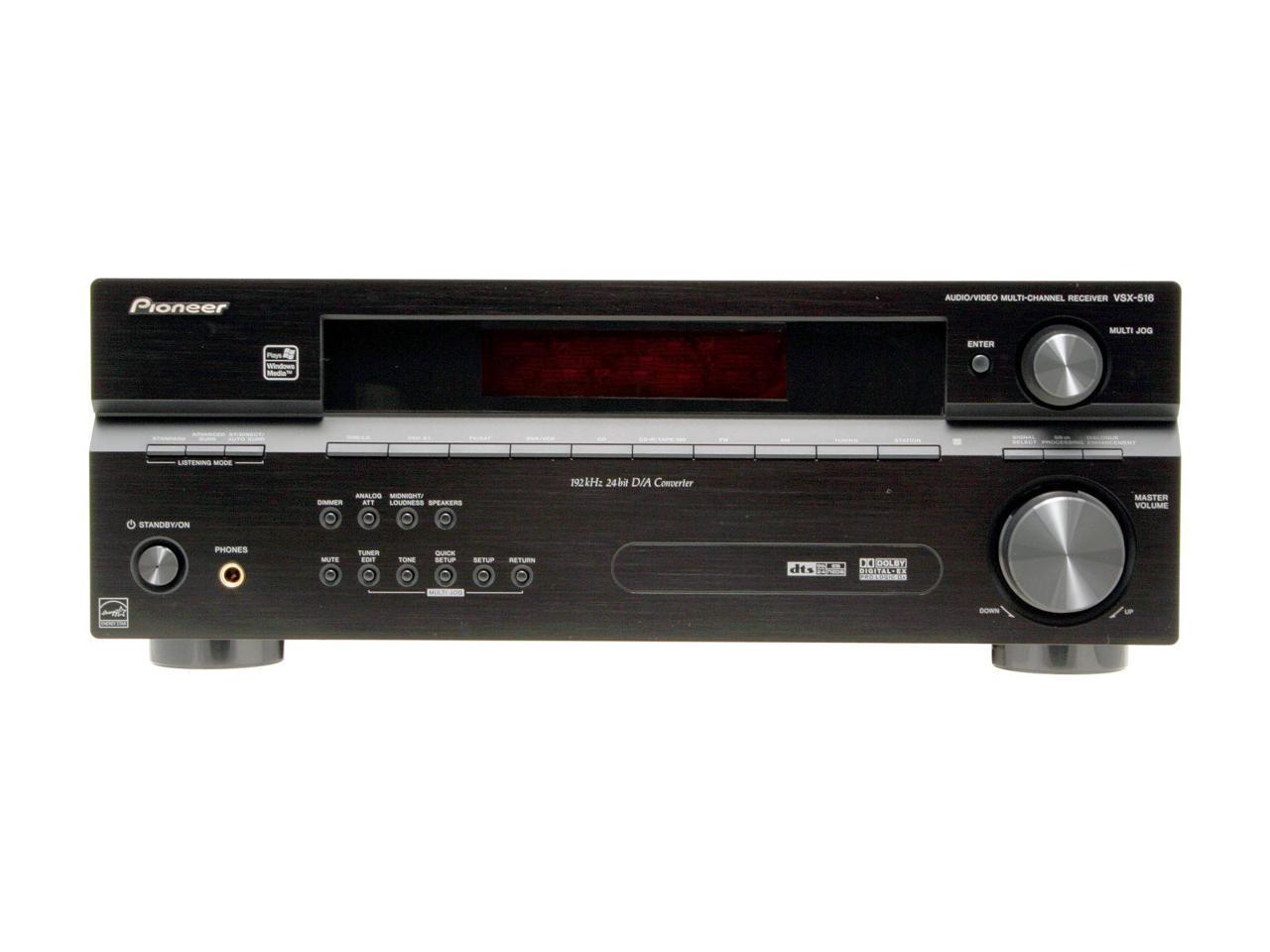

Audio connections include two stereo inputs, a set of 5.1-channel analog SACD/DVD-Audio ins and three assignable digital inputs (two optical, one coaxial). Unfortunately, other video sources are limited to composite-S-Video connections are completely absent-and the 515 won't upconvert your composite sources, such as VCRs, to a component-video signal. The receiver's modest jackset includes three A/V inputs, two of which accept component-video sources.
#Pioner vsx 516 pro#
In addition to the usual DTS-ES, Dolby Digital-EX, and Dolby Pro Logic IIx surround modes, the Pioneer VSX-515 processing set also includes Windows Media Audio decoding (though the real-world usefulness of onboard WMA processing is questionable at best). Pioneer's Thermal Compensation Amplification Design relies on a single integrated circuit to deliver 110 watts per channel.

It lacks backlit keys or an LCD readout, but we generally don't expect those niceties at this price point. The smallish, silver remote crams a lot of buttons and controls into a surprisingly useful layout. However, we missed the MCAC (Multi-Channel Acoustic Calibration) automatic setup system found in the 515's more expensive step-up siblings, the VSX-815, the VSX-915, and the VSX-1015TX. We found the procedure short and sweet and had everything sorted out in less than 10 minutes. The 515 lacks an onscreen display, so we set up the receiver using its front-panel display. The solidly designed 515 weighs 21.75 pounds, and since it's slightly less than 16 inches deep, it's a bit easier to place than a lot of competing models. You can get the 515 in either of two colors-the black ( VSX-515-K) and the silver ( VSX-515-S) versions have otherwise identical feature sets. The Pioneer VSX-515's no-frills aesthetic may not woo style-conscious buyers, but we found it attractive in a form-follows-function sort of way the unit's controls don't have the clunky feel that can betray some lower-priced receivers.


 0 kommentar(er)
0 kommentar(er)
